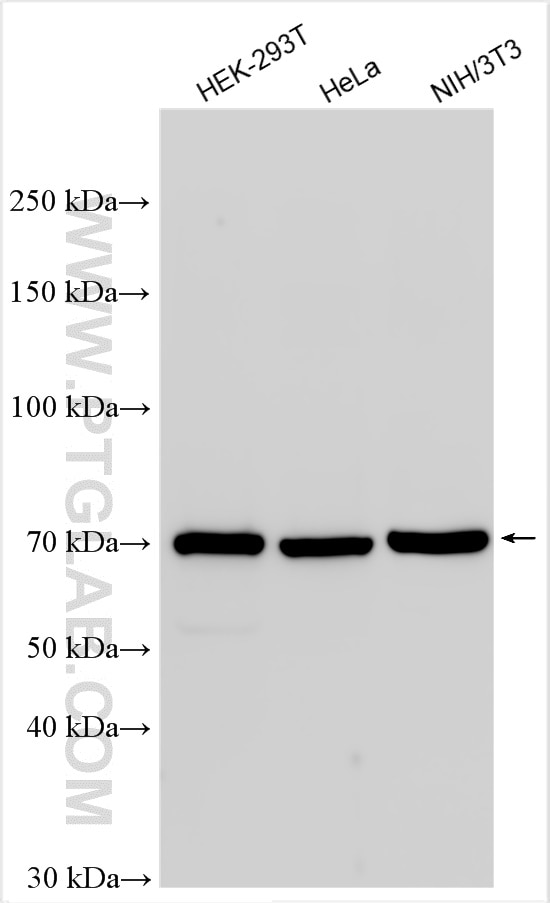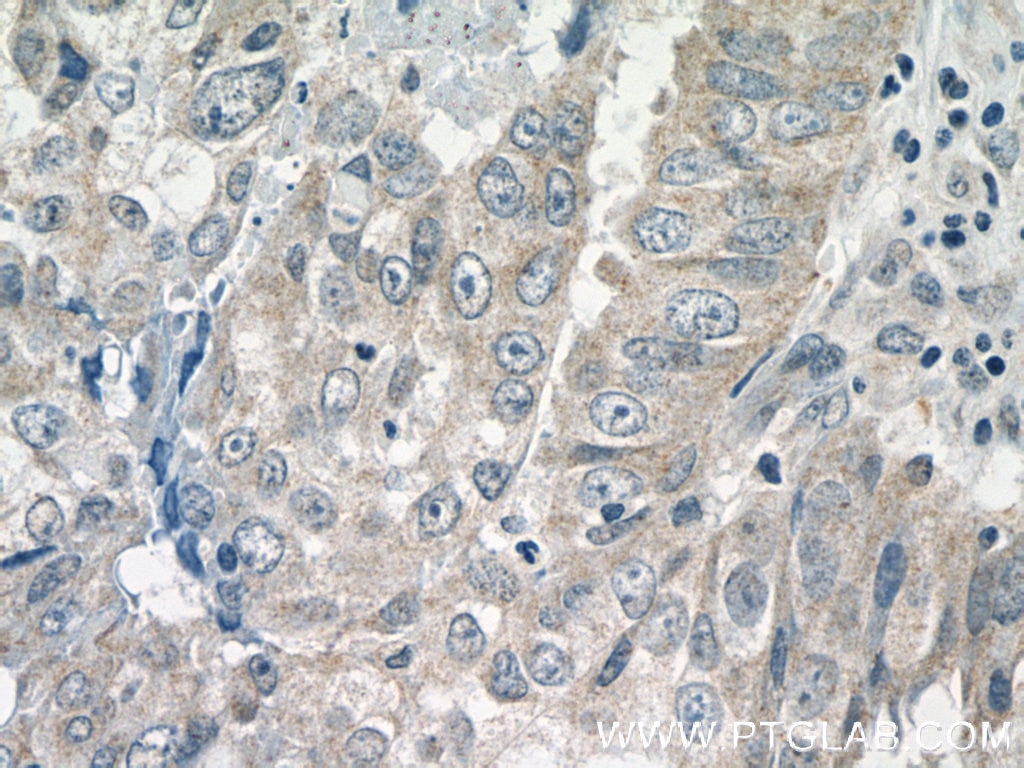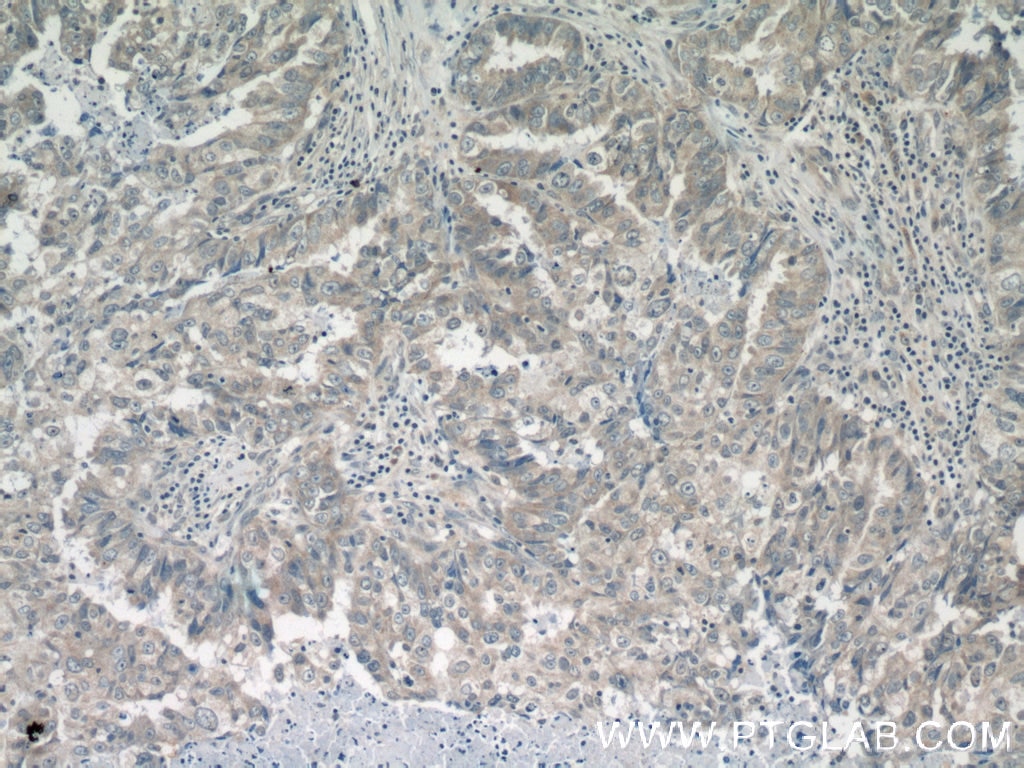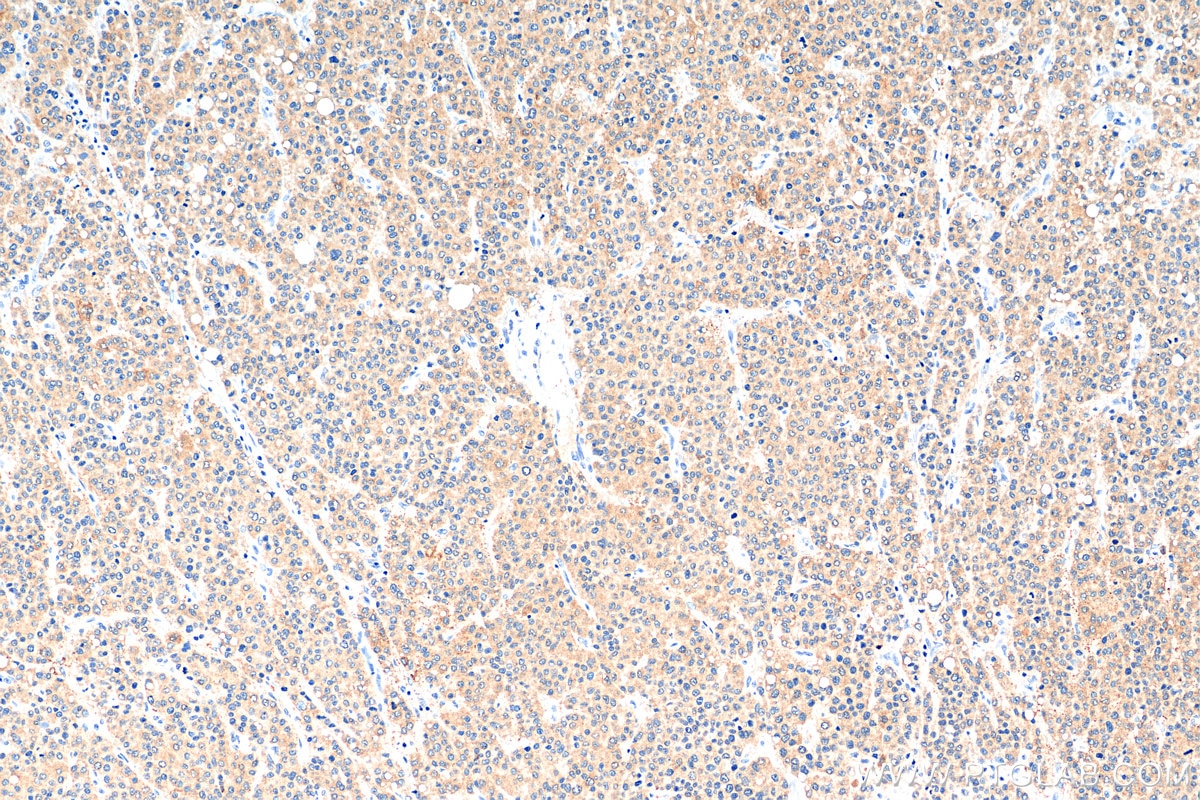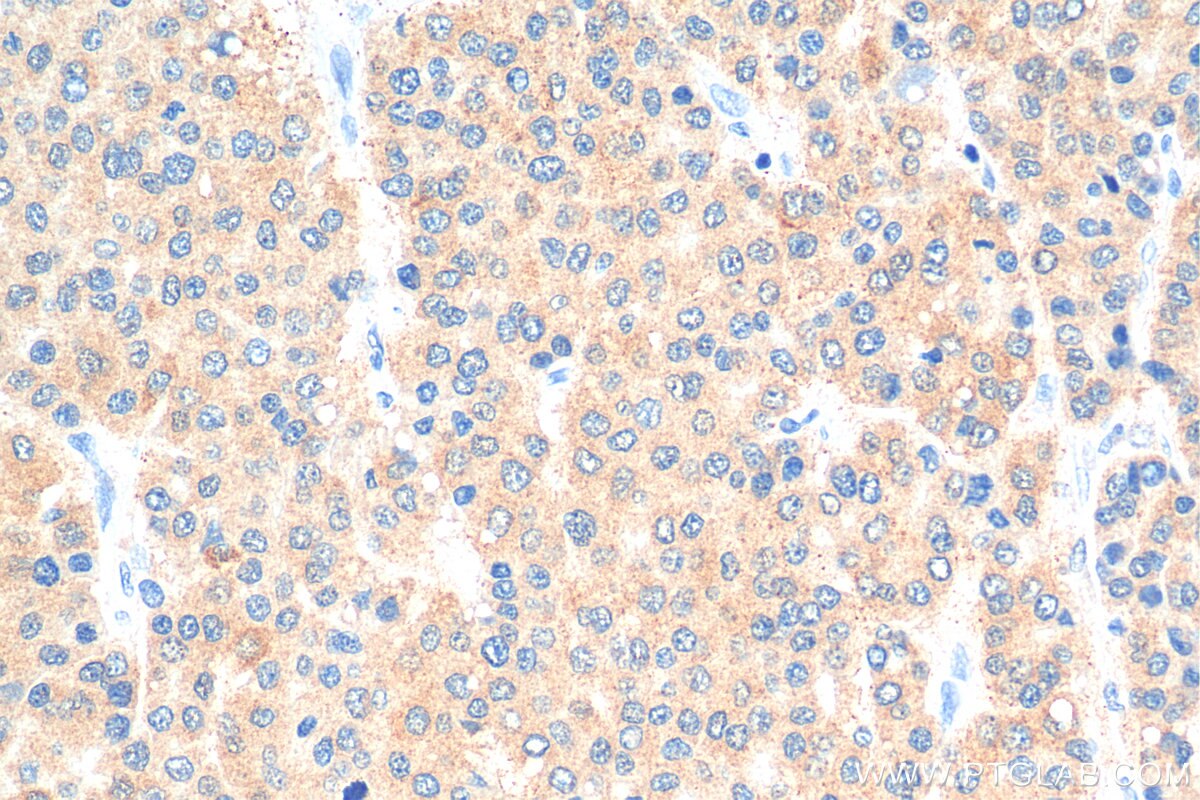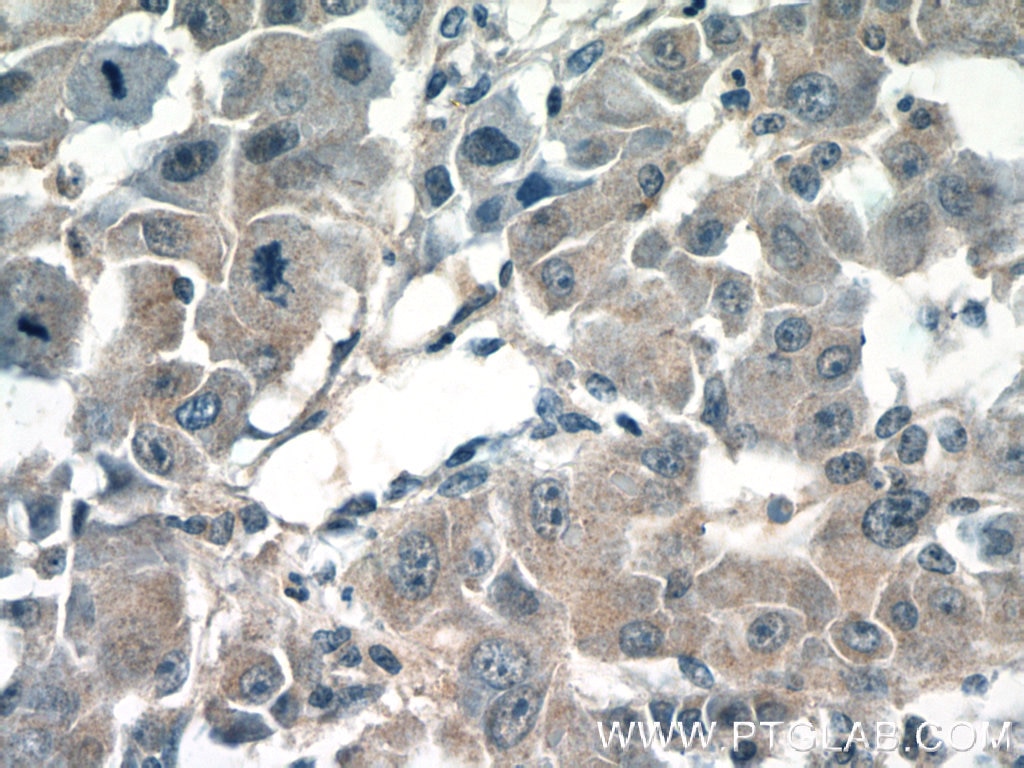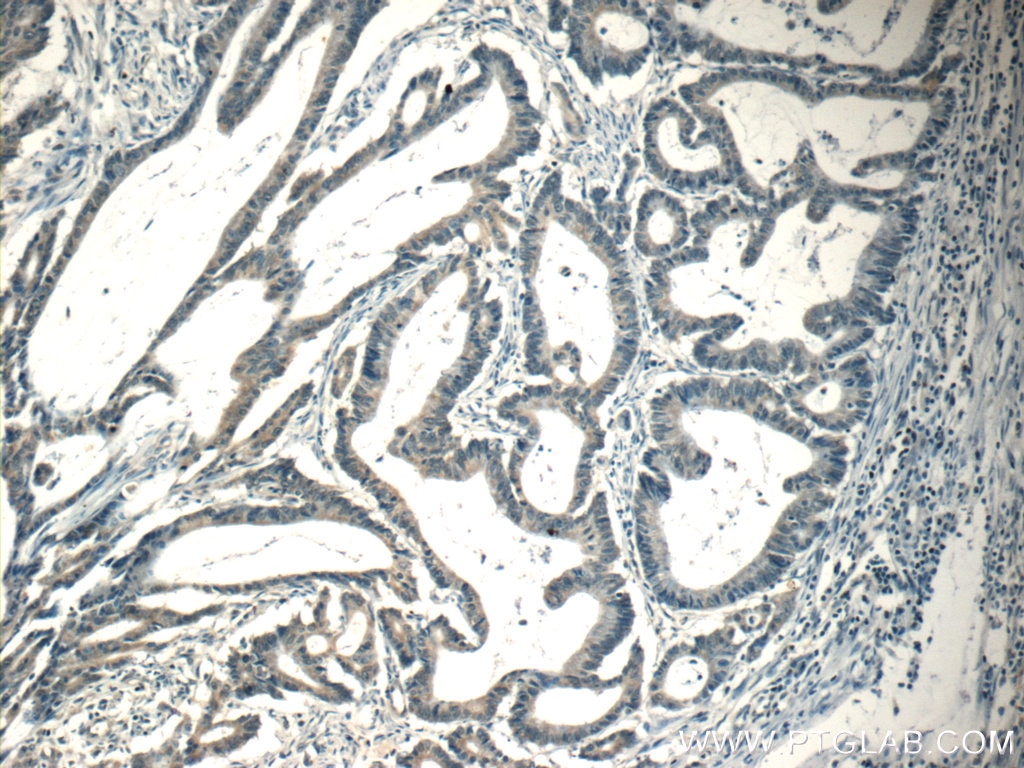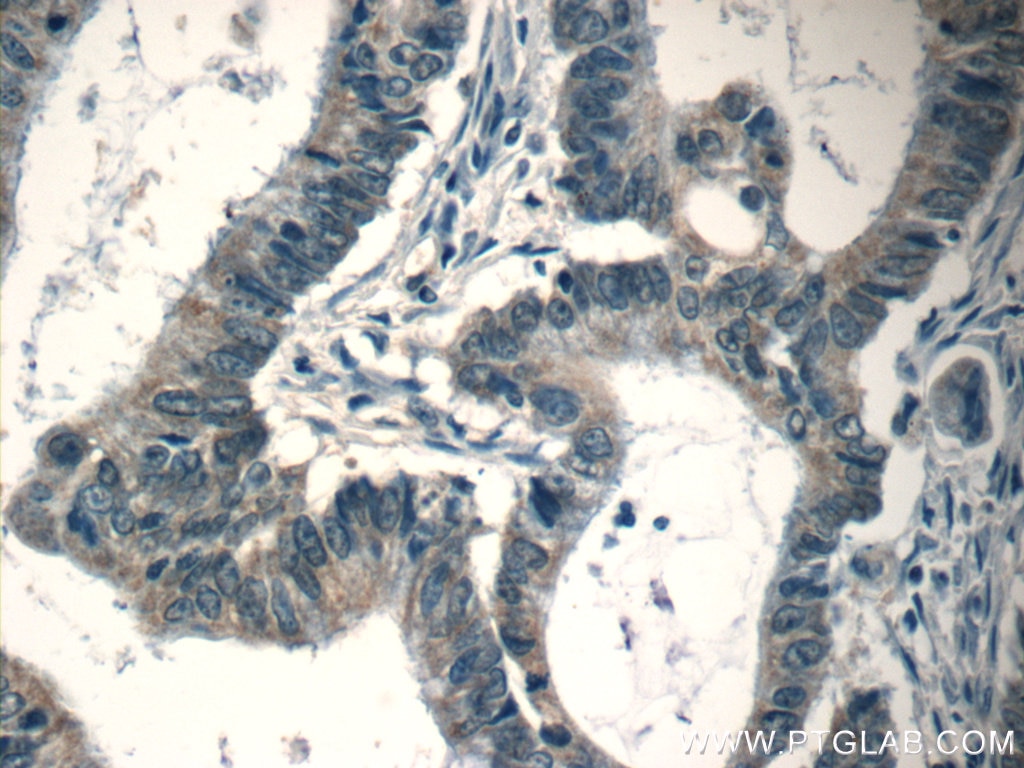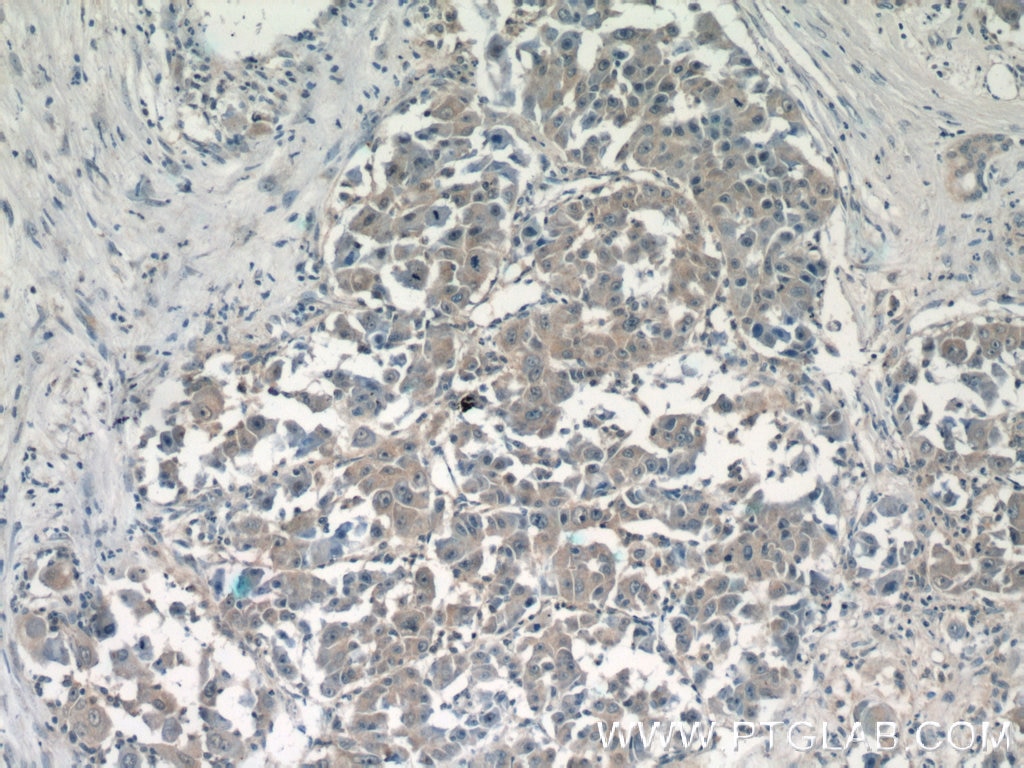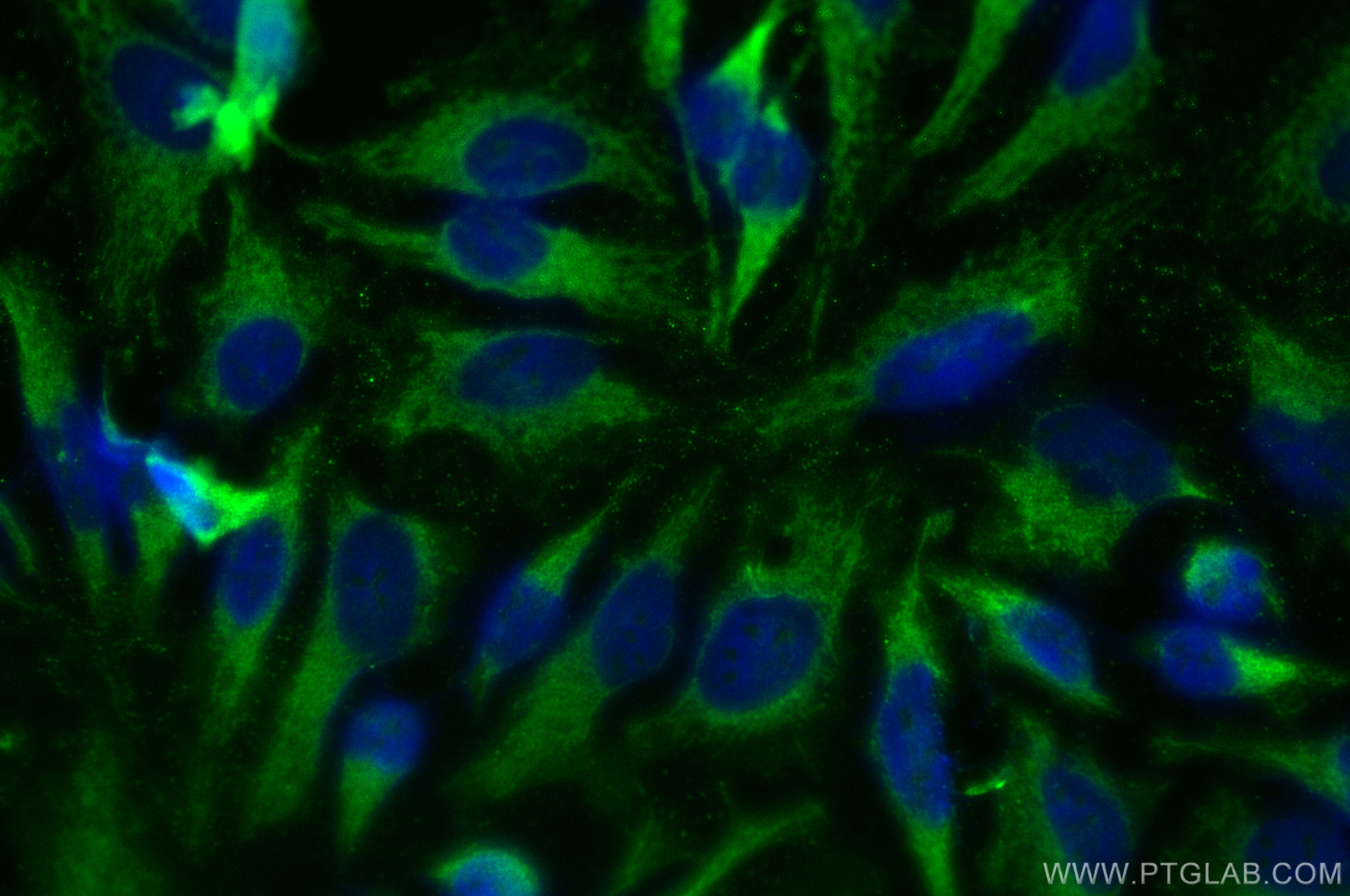- Featured Product
- KD/KO Validated
CPEB1 Polyklonaler Antikörper
CPEB1 Polyklonal Antikörper für WB, IHC, IF/ICC, ELISA
Wirt / Isotyp
Kaninchen / IgG
Getestete Reaktivität
human, Maus, Ratte
Anwendung
WB, IHC, IF/ICC, IP, RIP, ELISA
Konjugation
Unkonjugiert
Kat-Nr. : 13274-1-AP
Synonyme
Geprüfte Anwendungen
| Erfolgreiche Detektion in WB | HEK-293T-Zellen, HeLa-Zellen, NIH/3T3-Zellen |
| Erfolgreiche Detektion in IHC | humanes Leberkarzinomgewebe, humanes Mammakarzinomgewebe, humanes Kolonkarzinomgewebe Hinweis: Antigendemaskierung mit TE-Puffer pH 9,0 empfohlen. (*) Wahlweise kann die Antigendemaskierung auch mit Citratpuffer pH 6,0 erfolgen. |
| Erfolgreiche Detektion in IF/ICC | HeLa-Zellen |
Empfohlene Verdünnung
| Anwendung | Verdünnung |
|---|---|
| Western Blot (WB) | WB : 1:1000-1:4000 |
| Immunhistochemie (IHC) | IHC : 1:50-1:200 |
| Immunfluoreszenz (IF)/ICC | IF/ICC : 1:50-1:500 |
| It is recommended that this reagent should be titrated in each testing system to obtain optimal results. | |
| Sample-dependent, check data in validation data gallery | |
Veröffentlichte Anwendungen
| KD/KO | See 7 publications below |
| WB | See 15 publications below |
| IHC | See 2 publications below |
| IF | See 5 publications below |
| IP | See 2 publications below |
| RIP | See 1 publications below |
Produktinformation
13274-1-AP bindet in WB, IHC, IF/ICC, IP, RIP, ELISA CPEB1 und zeigt Reaktivität mit human, Maus, Ratten
| Getestete Reaktivität | human, Maus, Ratte |
| In Publikationen genannte Reaktivität | human, Maus, Ratte |
| Wirt / Isotyp | Kaninchen / IgG |
| Klonalität | Polyklonal |
| Typ | Antikörper |
| Immunogen | CPEB1 fusion protein Ag3994 |
| Vollständiger Name | cytoplasmic polyadenylation element binding protein 1 |
| Berechnetes Molekulargewicht | 486 aa, 54 kDa |
| Beobachtetes Molekulargewicht | 60-70kDa |
| GenBank-Zugangsnummer | BC035348 |
| Gene symbol | CPEB1 |
| Gene ID (NCBI) | 64506 |
| Konjugation | Unkonjugiert |
| Form | Liquid |
| Reinigungsmethode | Antigen-Affinitätsreinigung |
| Lagerungspuffer | PBS with 0.02% sodium azide and 50% glycerol |
| Lagerungsbedingungen | Bei -20°C lagern. Nach dem Versand ein Jahr lang stabil Aliquotieren ist bei -20oC Lagerung nicht notwendig. 20ul Größen enthalten 0,1% BSA. |
Hintergrundinformationen
CPEB1, also named as CEBP, CPEB and CPE-BP1, contains two RRM (RNA recognition motif) domains and belongs to the RRM CPEB family. It is a sequence-specific RNA-binding protein that regulates mRNA cytoplasmic polyadenylation and translation initiation during oocyte maturation, early development and at postsynapse sites of neurons. CPEB1 regulated translation is a key process involved in INS signaling. This is a rabbit polyclonal antibody raised against residues near the C terminus of human CPEB1.
Protokolle
| PRODUKTSPEZIFISCHE PROTOKOLLE | |
|---|---|
| WB protocol for CPEB1 antibody 13274-1-AP | Protokoll herunterladen |
| IHC protocol for CPEB1 antibody 13274-1-AP | Protokoll herunterladenl |
| IF protocol for CPEB1 antibody 13274-1-AP | Protokoll herunterladen |
| STANDARD-PROTOKOLLE | |
|---|---|
| Klicken Sie hier, um unsere Standardprotokolle anzuzeigen |
Publikationen
| Species | Application | Title |
|---|---|---|
Nature CPEB1 coordinates alternative 3'-UTR formation with translational regulation.
| ||
Nat Cell Biol Ultrasensitive Ribo-seq reveals translational landscapes during mammalian oocyte-to-embryo transition and pre-implantation development. | ||
Gastroenterology Sequential Functions of CPEB1 and CPEB4 Regulate Pathologic Expression of Vascular Endothelial Growth Factor and Angiogenesis in Chronic Liver Disease.
| ||
Adv Sci (Weinh) Selective Translation of Maternal mRNA by eIF4E1B Controls Oocyte to Embryo Transition | ||
Nat Commun Translational reprogramming in tumour cells can generate oncoselectivity in viral therapies. |
